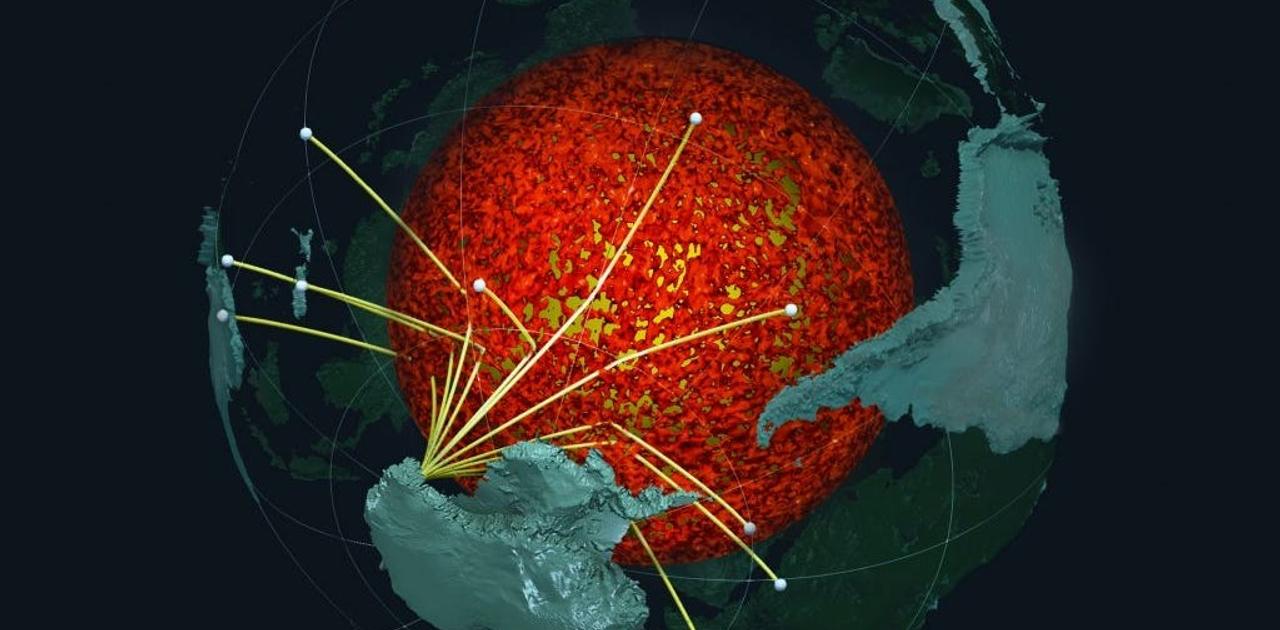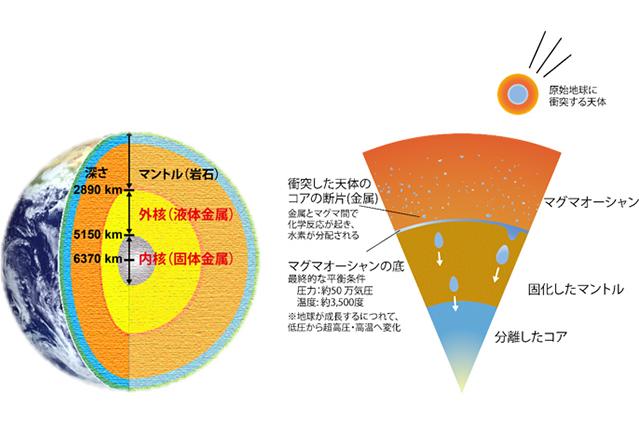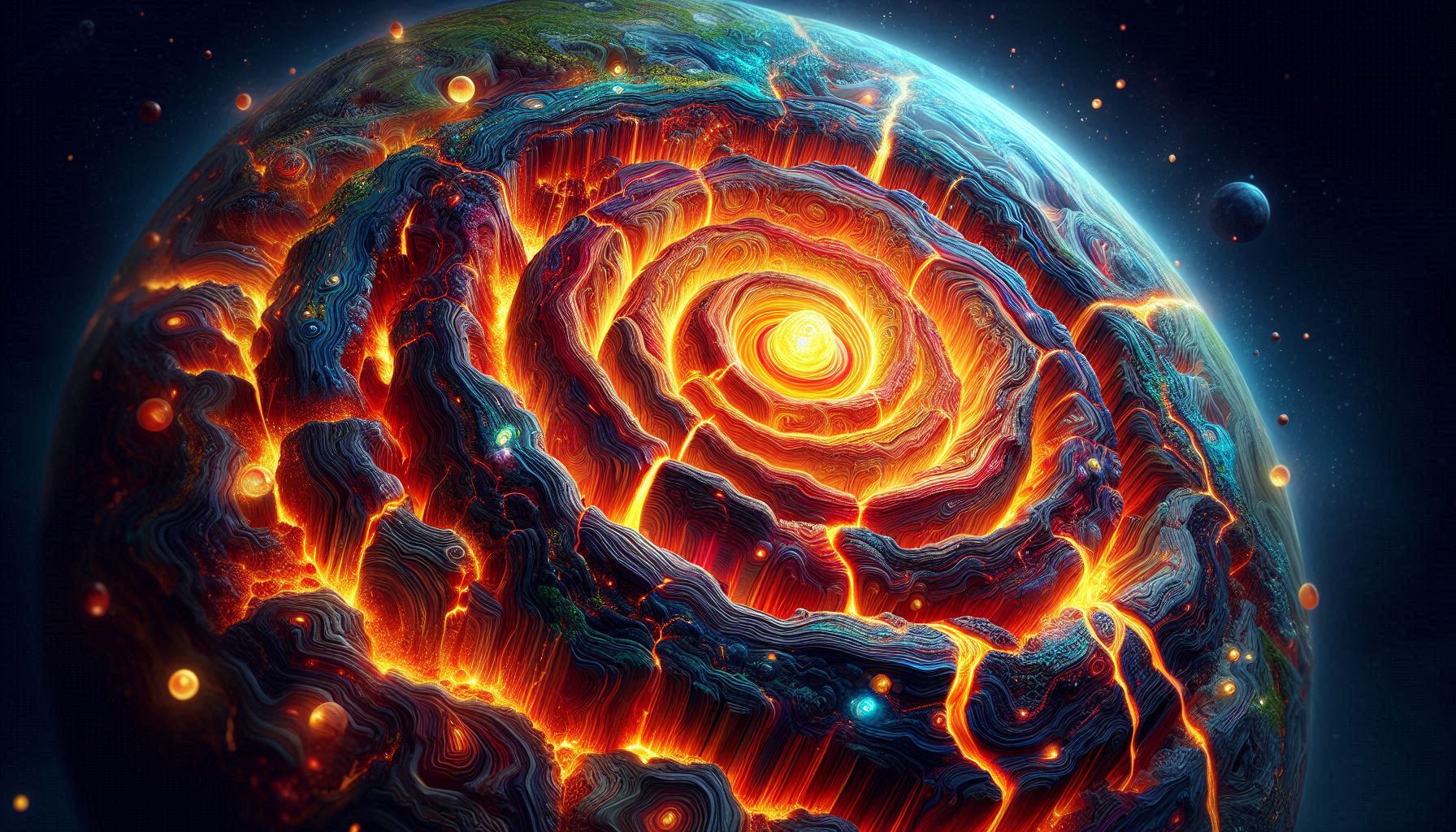When studying the mantle, it is said that there is a core even deeper inside the Earth. The Earth’s core is made up of an outer core and an inner core, and it seems that the outer core is made up of liquid iron and nickel, while the inner core is made up of solid iron and nickel. The deeper you go into the Earth, the higher the pressure and temperature becomes, so the outer core is at 1.4 million atmospheres and over 4,000°C, while the inner core is at 3.6 million atmospheres and over 5,000°C.In terms of depth, the outer core is 2,900 km and the inner core is 5,150 km and so cannot be seen directly, so seismic waves are captured and analyzed. And recent surveys have revealed some new discoveries.
There are still many unknowns about the boundary between the core and the mantle, and it seems that there is a mysterious layer there. The mantle seems to act like a giant recycling factory, sending the submerged ocean floor plates out to the surface through the mantle. During this process, the recycled ancient ocean floor plates act as a blanket around the core, trapping heat inside, keeping the core hotter and the surface at a comfortable temperature.

Another view is that at the boundary between the core and the mantle, hydrogen is absorbed into the core due to the influence of hydrated minerals in the ocean floor plate, leaving behind quartz (crystal) and other materials at the boundary to form a layer. The layer of crystal that surrounds the core is somewhat mysterious.
It has been known for some time that there is a large amount of hydrogen in the Earth’s core, but the amount is said to be 30 to 70 times the amount of all the seawater on Earth. Based on this, it is thought that there was 50 times as much water on the primordial Earth as there is today.

This is also a different theory, but it seems that there was a mysterious doughnut-shaped torus structure several hundred kilometers wide at the boundary between the core and the mantle. The boundary between the core and the mantle is the source of the Earth’s magnetic field due to the convection of liquid metal and the Earth’s rotation, and it is possible that this doughnut structure acts as a lens, concentrating the magnetic field lines and creating magnetic north and south. The structure of the boundary between the core and the mantle affects the entire Earth.

It has also been said that a core structure has been found even deeper inside the inner core. It is called the fifth layer or the innermost core, and it seems to have a different crystal structure than the inner core. The inner core seems to rotate independently of the Earth’s rotation, and compared to the Earth’s rotation, it seems to speed up, slow down, stop, or reverse. It seems to fluctuate quite a bit, but the discovery of the innermost core may shed new light on this.

I think the Earth’s crust, surface, and magnetosphere exist only because of the Earth’s core, and this phenomenon is the epitome of the important functions that we cannot see. The Earth’s core is amazing. The structure of the Earth is amazing.


